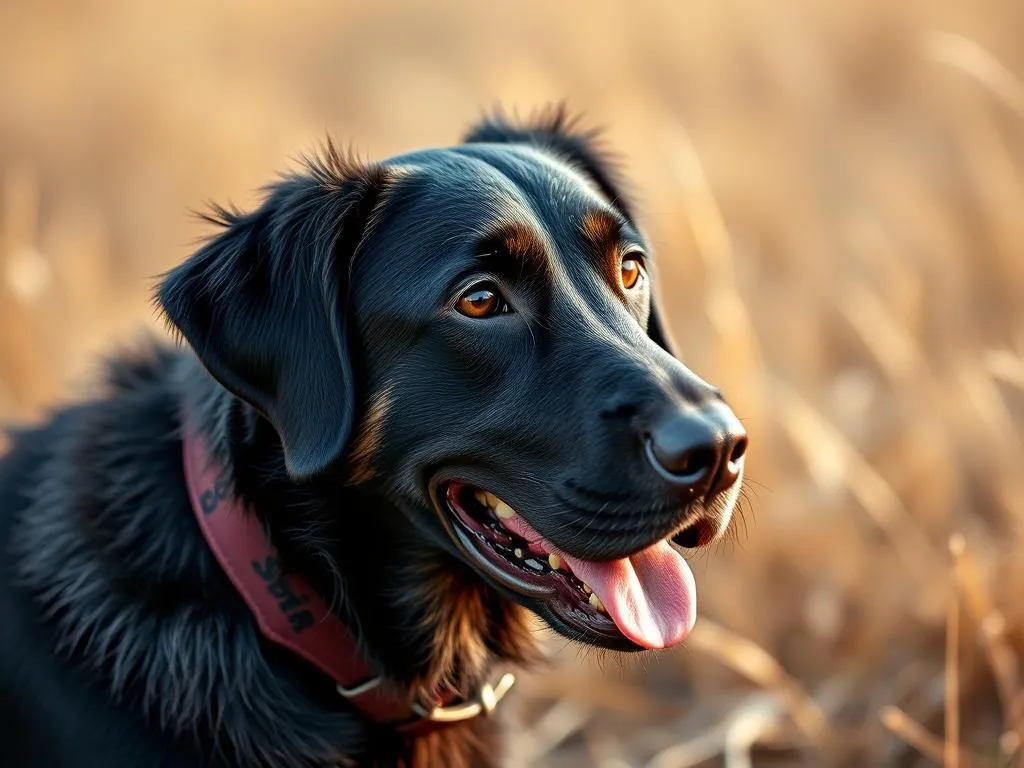
Introduction
Guide dogs are specially trained canines that provide essential assistance to individuals with visual impairments. Their primary purpose is to enhance the independence and mobility of their handlers, enabling them to navigate various environments safely. Guide dogs are not just pets; they become trusted companions that help individuals overcome the challenges posed by visual limitations.
The process of training a guide dog is intricate and requires a strong commitment from both the trainer and the dog. This article serves as a detailed guide on how to train a guide dog, covering everything from selecting the right breed to advanced training techniques, and the vital bond between the handler and their dog.
Understanding the Basics of Guide Dog Training
What is Guide Dog Training?
Guide dog training is a specialized process aimed at teaching dogs the skills necessary to assist individuals with visual impairments. The objectives of this training include teaching the dog to navigate obstacles, stop at curbs, and find specific locations such as doors or public transport. These dogs are trained to perform various tasks that ensure the safety and mobility of their handlers in everyday situations.
The Role of the Trainer
A guide dog trainer plays a pivotal role in the development of the dog’s skills. Trainers need a deep understanding of canine behavior, training techniques, and the specific needs of visually impaired individuals. Professional trainers often have formal education in animal behavior or psychology, and they undergo extensive training themselves.
In some cases, individuals may choose to train their own guide dogs. While this can be rewarding, it requires a significant time commitment and a strong foundation in training principles.
Selecting the Right Dog
Breeds Commonly Used for Guide Dogs
Certain breeds are renowned for their suitability as guide dogs due to their temperament, intelligence, and physical abilities. The most common breeds include:
- Labrador Retrievers: Known for their friendly nature and trainability.
- Golden Retrievers: Highly intelligent and eager to please, making them great companions.
- German Shepherds: Strong and protective, they excel in various types of service work.
Each breed has unique characteristics that can influence their suitability for guide work, and selecting the right breed is crucial for success.
Assessing Temperament and Behavior
In addition to the breed, assessing the individual dog’s temperament is vital. Look for dogs that exhibit:
- Calmness: An ability to remain composed in various situations.
- Curiosity: A willingness to explore and learn about their environment.
- Sociability: Comfort around people and other animals.
Early socialization and exposure to different environments are essential to ensure the dog adapts well to the unpredictable nature of urban life.
The Training Process
Initial Training: Socialization and Basic Obedience
The first phase of training focuses on socialization and basic obedience commands. This foundational training is crucial for a guide dog’s development.
Techniques for Socializing a Guide Dog
- Exposure to Different Environments: Take the dog to various places such as parks, busy streets, and stores to help them adapt.
- Controlled Interactions: Allow the dog to interact with people and other animals in a safe environment.
Essential Obedience Commands
Basic commands such as sit, stay, come, and heel are critical for effective communication between the dog and handler. Consistent practice of these commands helps establish a strong foundation for more advanced training.
Advanced Training: Guide Work Skills
Once the dog has mastered basic obedience, training can progress to more sophisticated guide work skills.
Teaching the Dog to Navigate Obstacles and Traffic
Guide dogs must learn to identify and navigate around obstacles. This involves teaching them to:
- Stop at curbs and steps.
- Navigate around pedestrians and other obstacles.
- Recognize traffic signals and safe crossing points.
Techniques for ‘Intelligent Disobedience’
One of the most remarkable abilities of guide dogs is their capacity for intelligent disobedience. This means that if a command could endanger the handler, the dog is trained to refuse the command. For example, if the handler commands the dog to cross the street when it’s unsafe, the dog should not comply.
Public Access Training
Preparing the guide dog for various public environments is essential. This includes:
- Store Visits: Training the dog to remain calm in busy retail settings.
- Public Transport: Teaching the dog how to navigate trains and buses while maintaining composure.
Good behavior in public settings is imperative for the safety and comfort of both the handler and the dog.
Training Techniques and Methods
Positive Reinforcement Training
Positive reinforcement is a fundamental training technique that focuses on rewarding desired behaviors. This method has several benefits, including:
- Encouraging repetition of desired behaviors.
- Building a positive association with training sessions.
Examples of Rewards
Rewards can include treats, praise, or playtime. For effective use, trainers should immediately reward the dog after they display the desired behavior.
Clicker Training
Clicker training is another popular method used in guide dog training. This technique uses a small device that makes a clicking sound to mark desired behaviors.
Step-by-Step Guide on Implementing Clicker Training
- Introduce the Clicker: Use the clicker to mark a behavior immediately followed by a reward.
- Practice Commands: Incorporate the clicker when teaching commands, clicking as soon as the dog performs the correct action.
- Gradually Phase Out the Clicker: Once the dog reliably performs the behavior, begin to reduce the use of the clicker and rely more on verbal praise.
Consistency and Patience
Consistency in training routines is vital for success. Establishing a regular schedule for training sessions helps reinforce learning.
Managing Expectations and Understanding the Learning Curve
Every dog learns at their own pace. It’s essential for trainers to remain patient and manage their expectations, recognizing that setbacks are a normal part of the training process.
Health and Well-being of the Guide Dog
Physical Health Care
Maintaining the physical health of a guide dog is crucial for their performance. Regular veterinary check-ups, vaccinations, and preventive care are essential components of their health care routine.
Importance of a Balanced Diet
A balanced diet contributes significantly to the dog’s energy levels, weight management, and overall health. Proper nutrition is vital during the training process to ensure the dog can perform at their best.
Mental Health and Enrichment
Mental stimulation is just as important as physical health. Providing activities such as puzzle toys, obedience games, and social interactions can help keep the dog mentally sharp and engaged.
Recognizing Signs of Stress or Burnout
Handlers should learn to identify signs of stress or burnout in their guide dogs. Common symptoms include:
- Excessive panting or drooling.
- Lack of interest in training or play.
- Withdrawal from social interactions.
Addressing these signs promptly can help maintain the dog’s overall well-being.
The Bond Between Handler and Dog
Building Trust and Communication
The relationship between the handler and the guide dog is built on trust and effective communication. Handlers should engage in activities that strengthen this bond, such as:
- Regular Training Sessions: Incorporate playful elements to make training enjoyable.
- Understanding Canine Body Language: Learning to read the dog’s cues can enhance communication and trust.
The Role of the Handler’s Attitude
A handler’s mindset significantly affects the training and performance of their guide dog.
Encouraging a Positive Partnership
Handlers should adopt a positive attitude, celebrating successes and remaining patient during challenges. This positive approach fosters a healthy partnership and encourages the dog to perform at their best.
Common Challenges in Guide Dog Training
Behavioral Issues
Even the best-trained dogs may encounter behavioral issues such as distraction, fear, or stubbornness. Addressing these problems requires patience and understanding.
Strategies for Overcoming Obstacles
- Redirecting Attention: Use toys or treats to redirect the dog’s focus.
- Gradual Exposure: Slowly introduce the dog to challenging environments to build confidence.
Dealing with Setbacks
Setbacks are a normal part of the training process. Handlers should remain resilient and adapt their training strategies when necessary. Seeking help from professional trainers can also provide valuable insights and solutions.
Conclusion
Training a guide dog is a rewarding yet challenging endeavor that significantly impacts the lives of individuals with visual impairments. From selecting the right dog to mastering advanced training techniques, every step is crucial for success. Proper training not only ensures the safety and mobility of the handler but also fosters a deep bond between the dog and handler, enhancing their quality of life.
As you embark on this journey, remember the importance of commitment, patience, and love in the training process. Your guide dog will not only be a companion but also a lifeline, empowering you to navigate the world with confidence.









